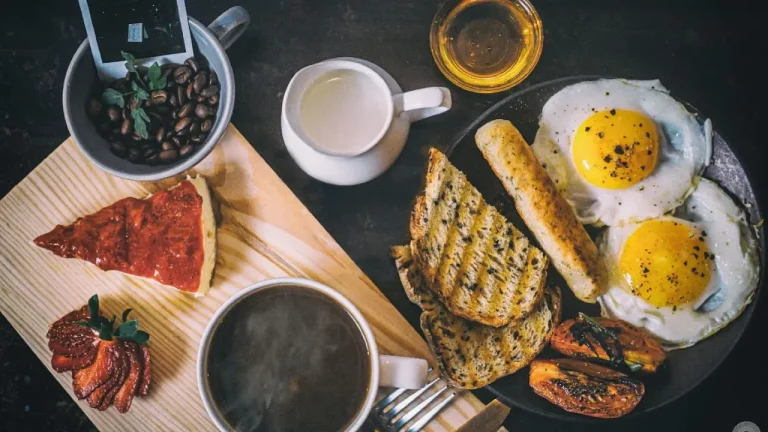South Indian Food Flavors and Traditions

South Indian food is one of the most loved cuisines in India because of its rich flavors, variety, and cultural roots. It reflects traditions from states like Tamil Nadu, Kerala, Karnataka, Andhra Pradesh, and Telangana. The cuisine is known for its unique mix of spices, rice-based dishes, and coconut flavors that bring comfort and taste.
Cultural Roots of South Indian Food
The history of South Indian food is deeply connected to festivals, rituals, and temple traditions. Every state has added its own influence to this cuisine while keeping rice and lentils as the base. Meals are served on banana leaves in many homes because this practice is both eco-friendly and believed to enhance the taste of food.
Ingredients
The flavors of this Indian food come from a wide range of ingredients like curry leaves, mustard seeds, tamarind, coconut, and red chilies. These ingredients create dishes that are spicy, tangy, and aromatic. Rice, lentils, and fresh vegetables play a big role, making the meals both filling and nutritious.
| Main Ingredient | Usage in Cuisine |
|---|---|
| Rice | Used in dosa, idli, and plain steamed rice |
| Coconut | Added as milk, grated, or oil |
| Tamarind | Used in idlis, vada, and curries |
| Lentils | Used in idli, vada, and curries |
| Curry Leaves | Adds aroma to tempering and curries |
Popular Breakfast Dishes
When people talk about this Indian food, breakfast items like dosa, idli, and vada come to mind quickly. These dishes are light yet filling and are often paired with chutney and sambar. The balance of soft idlis, crispy dosa, and spicy chutney makes mornings flavorful and healthy.
Sambar and Rasam
These are two dishes that show the depth of this Indian food. Sambar is made with lentils, tamarind, and vegetables, while rasam is a spiced soup flavored with pepper and tamarind. Both are eaten with rice and help in digestion, making them essential in daily meals across households.
Famous Thali Tradition

A South Indian thali is a full meal that represents balance, nutrition, and flavor. It usually includes rice, sambar, rasam, poriyal, curd, pickle, papadam, and a sweet. The thali reflects the idea of offering different tastes like sweet, sour, bitter, and spicy in a single meal.
Influence of Regional Styles
Though grouped, South Indian food differs from one state to another. Tamil Nadu focuses on spicy curries and idli-based meals. Kerala uses coconut oil, seafood, and appam in its cooking. Karnataka is known for bisi bele bath and Mysore pak, while Andhra Pradesh is famous for its fiery biryani and chutneys.
Snacks and Street Food Culture
South Indian snacks like banana chips, murukku, and sundal are enjoyed during evenings or festivals. Street food in cities offers piping hot idlis, masala dosa, and filter coffee that keep people coming back. The snacks reflect creativity while still staying close to traditional flavors.
Sweets and Festive Delights
Sweets hold a special place in this Indian food because they are prepared during festivals, weddings, and celebrations. Payasam, made with milk or coconut milk and jaggery, is a festive favorite. Mysore pak from Karnataka and adhirasam from Tamil Nadu are also popular treats that showcase regional expertise.
Health Benefits
The health value of this Indian food lies in its balanced use of grains, lentils, vegetables, and spices. Dishes like idli and dosa are fermented, making them rich in probiotics. Meals with sambar and rasam include tamarind, pepper, and curry leaves that support digestion and immunity.
Modern Popularity Across the World
This Indian food has gained recognition in countries like the USA, UK, and Singapore, where dosa and idli are widely available. Many international chefs are experimenting with this cuisine by mixing traditional flavors with modern styles. Despite changes, the essence of freshness and spice remains strong.
South Indian Food vs North Indian Food
The main difference between this Indian food and North Indian food lies in the ingredients and cooking style. North India uses wheat, dairy, and creamy gravies, while South India focuses on rice, lentils, tamarind, and coconut. Both cuisines are unique, but South Indian meals are often considered lighter and easier to digest.
| Feature | South Indian Food | North Indian Food |
|---|---|---|
| Staple Grain | Rice | Wheat (roti, naan) |
| Flavor Base | Tamarind, coconut, curry leaves | Onion, tomato, cream |
| Popular Dishes | Dosa, Idli, Sambar | Butter Chicken, Naan, Dal |
| Cooking Oils | Coconut oil, sesame oil | Ghee, mustard oil |
Dining Traditions and Practices
Eating with hands is a common practice when enjoying this Indian food. This method is believed to connect the eater with the meal on a deeper level. Meals are often enjoyed as a family or community experience, making food more about togetherness than just nutrition.
Global Appeal and Future
The future of South Indian food looks bright as it continues to reach more global kitchens. Restaurants around the world now serve authentic dishes, while health-conscious people appreciate the balanced meals. The cuisine’s ability to stay traditional yet adapt to new trends keeps it popular everywhere.
Conclusion
South Indian food is more than just a cuisine; it is a cultural experience that connects tradition, health, and taste. From crispy dosas to hearty sambar, every dish tells a story of flavor and care. With its rising popularity across the globe, this cuisine will continue to remain timeless and loved.






